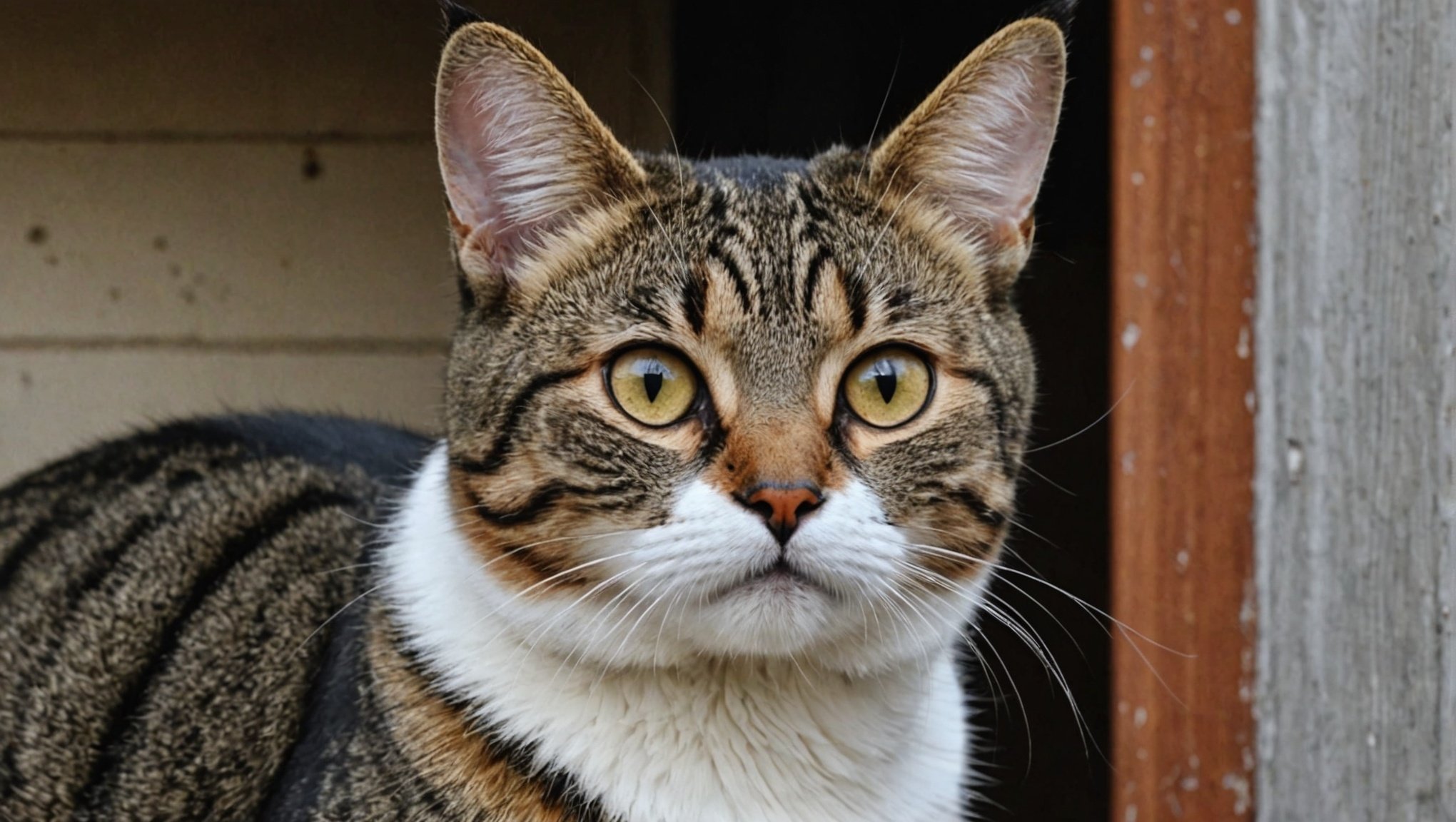Choosing a shelter cat can be a rewarding journey, but it requires careful consideration. Each feline has its unique personality, and matching that with your lifestyle is essential for creating a lasting bond. Understanding behaviors, preferences, and needs can lead to a harmonious relationship. This guide offers essential tips to help you find the perfect shelter cat, ensuring a fulfilling companionship for both you and your new furry friend. Embrace the joy of saving a life while enriching your own!
Evaluating Shelter Cats
Understanding a shelter cat’s temperament is crucial for a successful adoption. Observing their behavior and interactions can reveal much about their personality and compatibility with your home.
Sujet a lire : Ultimate Guide to Controlling Shedding in Long-Haired Cats: Top Strategies for Pet Parents
Importance of Temperament Assessment
When assessing a shelter cat, focus on their temperament. This involves watching how they behave around humans and other animals. A cat that approaches you confidently might be more sociable, while one that hesitates could be shy or cautious.
Observing Behavior and Interactions
Pay attention to the cat's behavior in different situations. Do they engage in play? Are they curious or reserved? These observations can help gauge their temperament.
A voir aussi : Essential Care Tips and Best Practices for Nurturing Hairless Breeds Like the Bambino Cat
Questions to Ask Shelter Staff
Engage with shelter staff to understand the cat's history and personality. Consider asking these questions:
- How does this cat typically interact with other animals?
- Has the cat shown any signs of aggression or fear?
- What is known about the cat's previous living environment?
These inquiries can provide insights into the cat's temperament and help you make an informed decision. By thoroughly evaluating a shelter cat, you increase the chances of a harmonious and fulfilling relationship. This process not only benefits you but also ensures a better life for the cat.
Personality Traits to Consider
Understanding a cat's personality traits is essential for a successful adoption.
Energetic vs. Calm Cats
Cats exhibit varying personality traits, ranging from energetic to calm. An energetic cat might enjoy active play and require more stimulation, while a calm cat may prefer quiet environments. Consider your household's energy level when choosing a cat.
Significance of Socialization Levels
A cat's socialization level significantly impacts its behavior. Well-socialized cats are typically more adaptable and friendly. Conversely, a cat with lower socialization levels might need more time to adjust. Assessing these personality traits helps you understand how the cat might fit into your lifestyle.
Consider these aspects:
- Interaction with humans
- Comfort in new environments
- Response to other animals
Importance of Age and Breed Characteristics
Age and breed influence a cat's personality traits. Kittens are usually more playful, while older cats often display settled behaviors. Additionally, certain breeds have distinct characteristics. For instance, Siamese cats are known for being vocal and social, whereas Persian cats are often more laid-back.
By evaluating these personality traits, you can better understand the cat's needs and ensure a harmonious match. This thoughtful approach benefits both you and the cat, fostering a positive adoption experience.
Preparing for Adoption
Creating a smooth transition for your new feline friend is essential.
Creating a Safe and Welcoming Space
Before bringing your new cat home, it's crucial to prepare a safe and welcoming space. This area should be quiet and free from potential hazards. Consider setting up a cozy bed, some toys, and a litter box. This dedicated space helps the cat feel secure as they adjust to their new surroundings.
Gathering Necessary Supplies
Having the right supplies on hand is vital for a smooth adoption process. Here's a checklist of essentials:
- Food and water bowls
- Litter box and litter
- Comfortable bedding
- Scratching post
- Toys for stimulation
These items ensure your cat has everything they need from day one.
Importance of Vet Visits and Vaccinations
Scheduling a vet visit soon after adoption is important for your cat's health. A veterinarian can provide necessary vaccinations and check for any health issues. Regular vet visits help maintain your cat’s well-being and establish a preventive care routine. Ensuring vaccinations are up to date protects your cat from diseases, contributing to a long and healthy life.
By focusing on these pre-adoption preparation steps, you create a solid foundation for a successful and harmonious relationship with your new cat.
The First Day at Home
Ensuring a smooth start for your new feline friend.
Tips for a Smooth Transition
Bringing a new cat home can be exciting yet challenging. To ease the first day with your cat, create a calm environment. Limit the cat's access to a single room initially. This helps them acclimate without feeling overwhelmed. Provide familiar objects like a blanket or toy from the shelter to offer comfort.
Introducing the Cat to Family Members and Other Pets
Introducing your cat to family members and other pets should be gradual. Allow the cat to explore at their own pace. Keep initial interactions short and supervised. Use a baby gate or a door to separate pets while they get used to each other's scents. This method reduces stress and promotes a peaceful first day with your cat.
Establishing a Routine
Establishing a routine is crucial for helping your cat feel secure. Feed them at the same times daily and maintain a consistent play schedule. Cats thrive on predictability, and a routine can make their first day with you less daunting.
- Feeding schedule: Twice daily
- Playtime: 15 minutes in the morning and evening
- Quiet time: Before bedtime
By focusing on these strategies, you ensure a positive and comforting first day with your cat.
Building a Bond with Your Cat
Creating a lasting connection through understanding and interaction.
Engaging in Interactive Play
Engaging in interactive play is essential for building a strong bond with your cat. Use toys like feather wands or laser pointers to simulate prey and encourage your cat's natural hunting instincts. This not only provides physical exercise but also fosters trust and mutual enjoyment. Regular play sessions can strengthen your relationship and help your cat feel more secure.
Using Positive Reinforcement
Positive reinforcement is a powerful tool for training and behavior adjustment. Reward your cat with treats or praise when they exhibit desired behaviors. This encourages them to repeat those actions. Consistency is key; ensure that rewards are given immediately following the behavior to reinforce the connection. Over time, your cat will associate positive actions with rewards, promoting a harmonious living environment.
Understanding Body Language
Understanding your cat's body language is crucial for effective communication. Pay attention to signals like tail position, ear orientation, and vocalizations. A cat with a relaxed posture and purring sounds is likely content, while flattened ears or a flicking tail may indicate discomfort. By interpreting these signals, you can respond appropriately, enhancing your bond and ensuring your cat feels understood and respected.
Integration with Family and Other Pets
Creating a harmonious household with your new feline friend.
Gradual Introductions to Other Pets
Introducing a new cat to your household requires patience and a thoughtful approach. Gradual introductions are key to successful cat integration strategies. Start by allowing your new cat to explore a room without other pets present. Use scent-swapping techniques, such as exchanging bedding, to familiarize pets with each other's smell before meeting face-to-face.
Monitoring Interactions to Ensure a Positive Environment
Careful observation during initial interactions is crucial. Monitor body language and vocalizations to gauge comfort levels. If tension arises, separate the animals and try again later. A positive environment is essential for successful cat integration strategies. Consider using baby gates or pet barriers to provide a safe space where all animals can observe each other without direct contact.
Strategies for Addressing Territorial Behavior
Territorial behavior can be a challenge when integrating a new cat. Use these strategies to address potential issues:
- Create separate feeding areas to reduce competition.
- Provide multiple litter boxes to prevent territorial disputes.
- Offer individual playtime to ensure each pet feels valued.
By focusing on these cat integration strategies, you can foster a peaceful coexistence among your pets, enhancing the overall harmony of your home.
Understanding Feline Behavior
Insights into your cat's actions and emotions.
Common Behavioral Traits and Their Meanings
Cats exhibit various feline behavior insights that can help you understand their needs and emotions. For instance, kneading is a sign of contentment, while purring often indicates relaxation. A cat wagging its tail rapidly may feel agitated or playful. Recognizing these behaviors allows you to respond appropriately, fostering a positive environment.
Recognizing Signs of Stress or Discomfort in Cats
Understanding feline behavior insights also involves identifying signs of stress or discomfort. Common indicators include hiding, excessive grooming, or a change in appetite. If your cat shows these signs, consider factors like environmental changes or interactions with other pets. Addressing these issues promptly can alleviate stress and improve their well-being.
Importance of Patience During the Adjustment Period
Patience is crucial when interpreting feline behavior insights during the adjustment period. Cats may take time to acclimate to new surroundings and routines. Allow them space to explore at their own pace. Gradual exposure to new environments and consistent routines can help ease this transition.
- Signs of comfort: Purring, kneading, relaxed posture
- Signs of stress: Hiding, hissing, reduced appetite
By understanding these feline behavior insights, you can better support your cat's emotional health, ensuring a harmonious home.
Long-Term Care and Relationship Building
Ensuring a fulfilling life for your feline companion.
Regular Health Check-Ups and Preventive Care
Maintaining your cat's health is a cornerstone of long-term cat care. Schedule regular veterinary visits to monitor their well-being and address any emerging health issues. Routine preventive care includes vaccinations, dental cleanings, and parasite control. A proactive approach ensures your cat remains healthy and vibrant throughout their life.
Continuing to Engage in Bonding Activities Over Time
Building a strong relationship with your cat requires ongoing effort. Engage in bonding activities such as interactive play and grooming sessions. These activities not only strengthen your connection but also provide mental and physical stimulation. Consistent interaction fosters trust and helps your cat feel secure.
Creating a Stimulating Environment to Keep the Cat Happy
A stimulating environment is essential for long-term cat care. Provide a variety of toys, scratching posts, and climbing structures to encourage exploration and play. Rotate toys regularly to maintain interest. Consider the following elements for an enriching home:
- Interactive toys: Feather wands, puzzle feeders
- Vertical spaces: Cat trees, shelves
- Sensory experiences: Catnip, window perches
By focusing on these aspects of long-term cat care, you ensure your cat enjoys a happy, healthy, and fulfilling life.
Resources for New Cat Owners
Providing essential support for cat owners embarking on their journey.
Recommended Books and Online Resources
For those seeking support for cat owners, insightful books and online resources are invaluable. Notable titles like "The Cat Whisperer" and "Think Like a Cat" offer guidance on understanding feline behavior. Online forums and websites such as The Cat Site provide a community where cat owners can share experiences and advice.
Local Support Groups and Forums
Connecting with local support groups can be beneficial for new cat owners. These groups offer a platform to discuss challenges and share tips. Community centers or pet stores often host gatherings where cat enthusiasts can exchange knowledge. Participating in these forums fosters a sense of camaraderie and provides ongoing support.
Finding a Trusted Veterinarian and Pet Services
Identifying a reliable veterinarian is crucial for maintaining your cat's health. Seek recommendations from fellow cat owners or local support groups. Consider the following when selecting a veterinarian:
- Experience with cats
- Proximity to home
- Emergency services availability
In addition, explore local pet services like grooming and boarding facilities. These services ensure comprehensive care and support for cat owners, enhancing the overall well-being of your feline friend.













